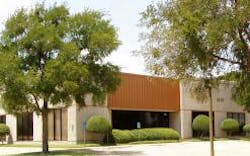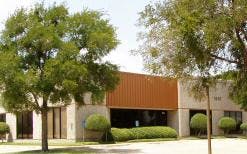BAE Systems to acquire Eclipse Electronic Systems, specializing in ISR, from Esterline
ARLINGTON, Va., 12 Dec. 2014. BAE Systems has entered into an agreement with Esterline Corp. for the proposed acquisition of its wholly owned subsidiary, Eclipse Electronic Systems Inc., for approximately $28 million, subject to closing adjustments.
Eclipse Electronic Systems in Texas employs roughly 90 people and provides advanced intelligence, surveillance, and reconnaissance (ISR) products and services to the U.S. defense and intelligence community.
The proposed acquisition of the Eclipse Electronic Systems operations will enhance BAE Systems’ ISR offerings to existing customers, and broaden the potential customer base.
“This proposed acquisition fully aligns with BAE Systems’ strategy to invest in advanced technologies critical to U.S. national security and defense needs,” explains Tom Arseneault, chief operating officer at BAE Systems Inc. “By combining Eclipse Electronic Systems’ products with BAE Systems’ existing ISR capabilities, we will be able to support our customers’ requirements for reliable, smaller, lighter, and more power-efficient sensor solutions to capture and harness actionable intelligence.”
The proposed acquisition is conditional upon receiving certain regulatory approvals. It is anticipated the proposed acquisition will be completed during the first quarter of 2015.
Eclipse Electronic Systems Inc. operates in a 20,000 square-foot facility with a manufacturing area, stockroom, engineering lab, production test, and engineering offices. Eclipse has a senior engineering technical staff with extensive applicable signals intelligence (SIGINT) industry experience. The Eclipse manufacturing staff is DOD 2000 qualified and has extensive experience in workmanship and procedures required for space launch-qualified hardware.
Eclipse has an extensive investment in CAD tools for radio-frequency (RF), analog, and digital circuit design and simulation. MATLAB and XILINX SYSGEN are used for DSP algorithm development, simulation, and implementation. XILINX Foundation Tools and ALDEC are used for VHDL FPGA designs and simulations, Eagleware Genisis for linear RF design and electromagnetic modeling and simulation, and PSPICE for nonlinear and linear simulations.
Mentor Graphics software tools are used for schematic capture and printed circuit board (PCB) design. AutoCad is used for mechanical designs.
JTAG Technogies and OnTap JTAG tools are utilized for production testing. National Instruments LabView is utilized for automating production Acceptance Test Procedures.
Laboratory and manufacturing area floors are maintained with anti-static wax. The manufacturing area is equipped with state of the art assembly work stations and microscopes. Every production test station and development lab bench is equipped with a networked computer.

